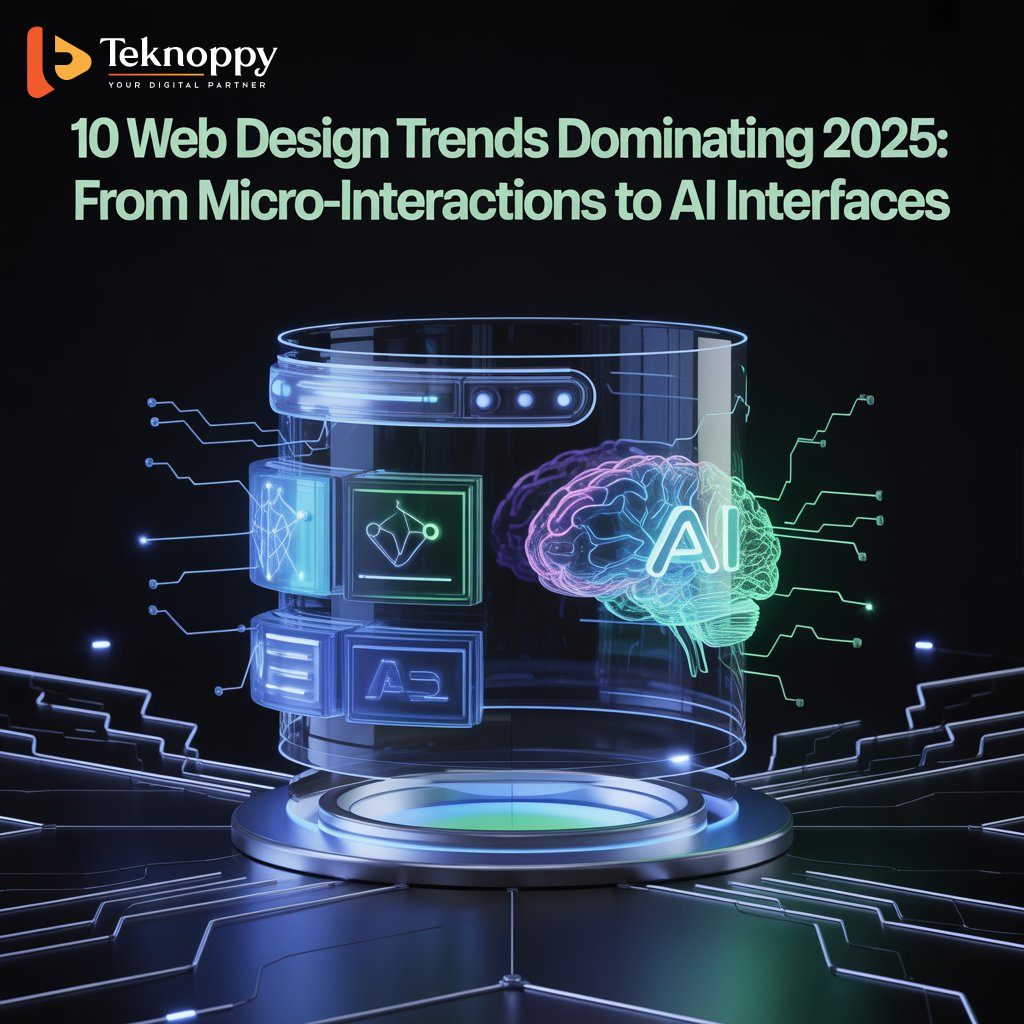
The digital landscape continues to evolve at breakneck speed, and 2025 has ushered in revolutionary changes that are reshaping how we experience the web. From intelligent interfaces to immersive interactions, today’s websites are more dynamic, personalized, and engaging than ever before. Let’s explore the ten dominant trends transforming AI web design this year.
Artificial intelligence has moved beyond chatbots to create truly adaptive web experiences. AI web design now enables websites to analyze user behavior in real-time, adjusting layouts, content recommendations, and navigation paths based on individual preferences. This intelligent personalization creates unique experiences for each visitor, dramatically improving engagement and conversion rates.
Subtle animations and responsive feedback have become essential elements of modern web design. These micro-interactions—button hover effects, loading animations, and scroll-triggered movements—create delightful moments that guide users through their journey. When executed thoughtfully, these small details transform static pages into living, breathing interfaces that respond to every click and gesture.
Three-dimensional graphics are no longer reserved for gaming websites. Designers are incorporating 3D models, parallax scrolling, and depth-layered elements to create immersive experiences that pull users into the content. This spatial approach adds visual interest while maintaining fast load times through optimized rendering techniques.
As voice assistants become ubiquitous, websites are integrating voice navigation and voice search capabilities. This hands-free interaction method improves accessibility while catering to users who prefer speaking over typing. The integration of voice commands represents a significant shift toward multi-modal web experiences.
Bold, oversized typography combined with unconventional layouts is challenging traditional design norms. This trend embraces raw, unpolished aesthetics with asymmetrical grids, clashing fonts, and unexpected text placements. While not suitable for every brand, this approach creates memorable experiences that stand out in crowded digital spaces.
What began as an alternative viewing option has become a design requirement. Users expect seamless dark mode functionality, and designers are creating sophisticated color systems that maintain brand identity across both light and dark themes. This dual-design approach improves readability and reduces eye strain during extended browsing sessions.
Environmental consciousness has entered the design studio. Developers are prioritizing lightweight code, optimized images, and efficient hosting solutions to reduce carbon footprints. This sustainability focus aligns perfectly with performance optimization, creating faster websites that consume fewer resources.
Scrolling has evolved from simple page navigation to an interactive storytelling medium. Websites now feature sophisticated animations that unfold as users scroll, creating narrative experiences that guide attention and build anticipation. These scroll-activated elements transform lengthy content into engaging visual journeys.
The neumorphic design trend brings a tactile, physical quality to digital interfaces through soft shadows and subtle depth cues. This approach creates buttons and elements that appear to rise from or sink into the background, offering visual clarity while maintaining minimalist aesthetics. The soft, touchable appearance bridges the gap between digital and physical design.
Moving beyond static templates, websites now employ generative systems that create unique layouts and visual elements for each visit. AI web design tools generate color schemes, suggest layout variations, and even create original graphics based on content context. This dynamic approach ensures that websites remain fresh and engaging over time.
While these trends offer exciting possibilities, successful implementation requires careful consideration. The key lies in selecting elements that align with brand identity and user needs rather than adopting trends for novelty’s sake. Performance must never be sacrificed for visual flair, and accessibility should remain paramount in every design decision.
Modern web design demands a delicate balance between innovation and functionality. Designers must consider loading speeds, mobile responsiveness, and user experience fundamentals while incorporating these cutting-edge trends. The most successful websites in 2025 are those that leverage new technologies to solve real problems rather than simply showcase technical capabilities.
As we progress through 2025, these trends will continue evolving, influenced by emerging technologies and changing user expectations. AI web design capabilities will expand, offering even more sophisticated personalization and automation tools. The line between web, mobile, and physical experiences will blur further as augmented reality and spatial computing mature.
The websites that thrive in this environment will be those that maintain human-centered design principles while embracing technological advancement. They’ll create experiences that feel intuitive, perform flawlessly, and deliver genuine value to users.
The web design landscape of 2025 represents an exciting convergence of artificial intelligence, interactive elements, and user-centric thinking. These ten trends demonstrate how far the industry has progressed, creating digital experiences that are more engaging, accessible, and intelligent than ever before.
Whether you’re launching a new website or refreshing an existing one, partnering with experienced professionals ensures these trends are implemented effectively. If you’re seeking expertise in creating cutting-edge digital experiences, consider consulting with the best web design company in Kochi to bring your vision to life with strategic implementation and creative excellence.

Communicate with our experts to bring out better solutions to your problem.
 +91 6282249224
+91 6282249224This will close in 0 seconds